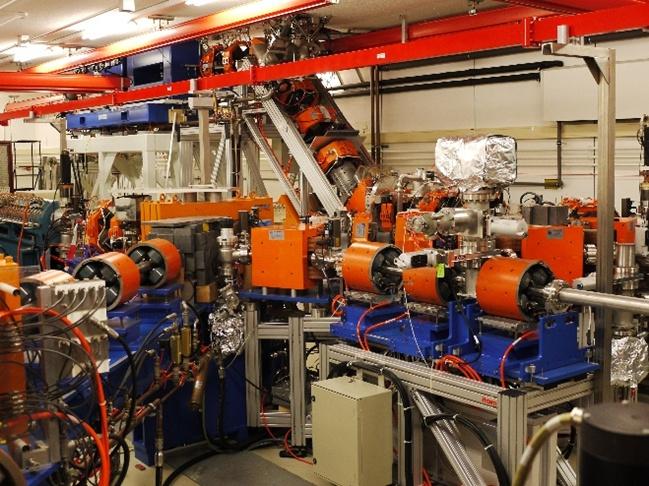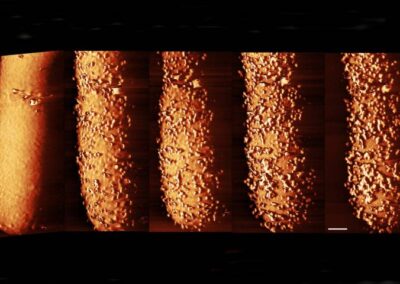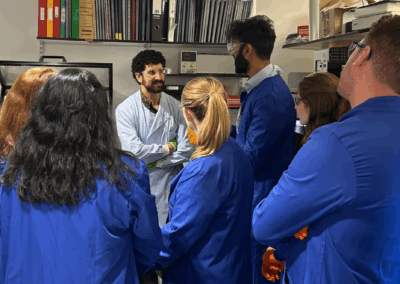Research has demonstrated laser control of quantum states in an ordinary silicon wafer and observation of these states via a conventional electrical measurement. The findings – published in the journal Nature Communications by a UK-Dutch-Swiss team from the University of Surrey, University College London, Heriot-Watt University in Edinburgh, the Radboud University in Nijmegen, and ETH Zürich/EPF Lausanne/Paul Scherrer Institute in Switzerland – mark an important step towards future quantum technologies, which promise to deliver secure communications and superfast computing applications.
 Image: Two of the team from Radboud University (Britta Redlich and Nikolas Stavrias) with the experimental setup used to create and manipulate quantum superpositions in Si:P. The THz light from FELIX enters through the vertical pipe on the right; the sample is mounted in the box in the foreground
Image: Two of the team from Radboud University (Britta Redlich and Nikolas Stavrias) with the experimental setup used to create and manipulate quantum superpositions in Si:P. The THz light from FELIX enters through the vertical pipe on the right; the sample is mounted in the box in the foreground
According to quantum mechanics, atoms can exist in states which are both excited and unexcited at the same time. These are known as superposition states and their creation and manipulation are important in quantum computing. However, these states are very delicate; attempting to manipulate them can destroy them and they must usually be isolated from disrupting environmental influences. Thus, it was a surprise to discover that such states could be created in P atoms embedded in Si (Greenland, P. T. et al. Nature 465, 1057–1061) using pulses of THz radiation from the FELIX free electron laser, now at Radboud University, Nijmegen in the Netherlands. The team detected these states using the so-called photon echo, an all-optical quantum mechanical technique used in atomic physics.
They have now gone even further, and used the same detection technique to show that as well as creating such superposition states they were able to use a second FELIX pulse to manipulate them, thus producing a new superposition state from the original. This ability is crucial for any quantum computing scheme, and it is satisfactory for the scientific community to know that it can be done in a Si environment.
However, an even more surprising result is that the team can detect the same quantum manipulation of these superposition states by measuring the electrical resistance of the Si sample. This is important for three reasons: first it shows that the superposition states are not disrupted by a current flowing past them; secondly, in these cases, electrical detection is much more sensitive than optical methods so we can work with smaller samples, and finally it is much easier experimentally.
Quantum superpositions and the resulting quantum technologies are only just beginning to make an impact; it is only a matter of time before they become common. This work brings that time closer by establishing a direct experimental link between the quantum manipulation of donors in Si and conventional electronics, thus enabling the researchers to use their experience of conventional electronics to explore the manipulation of donors in Si with greater confidence.


